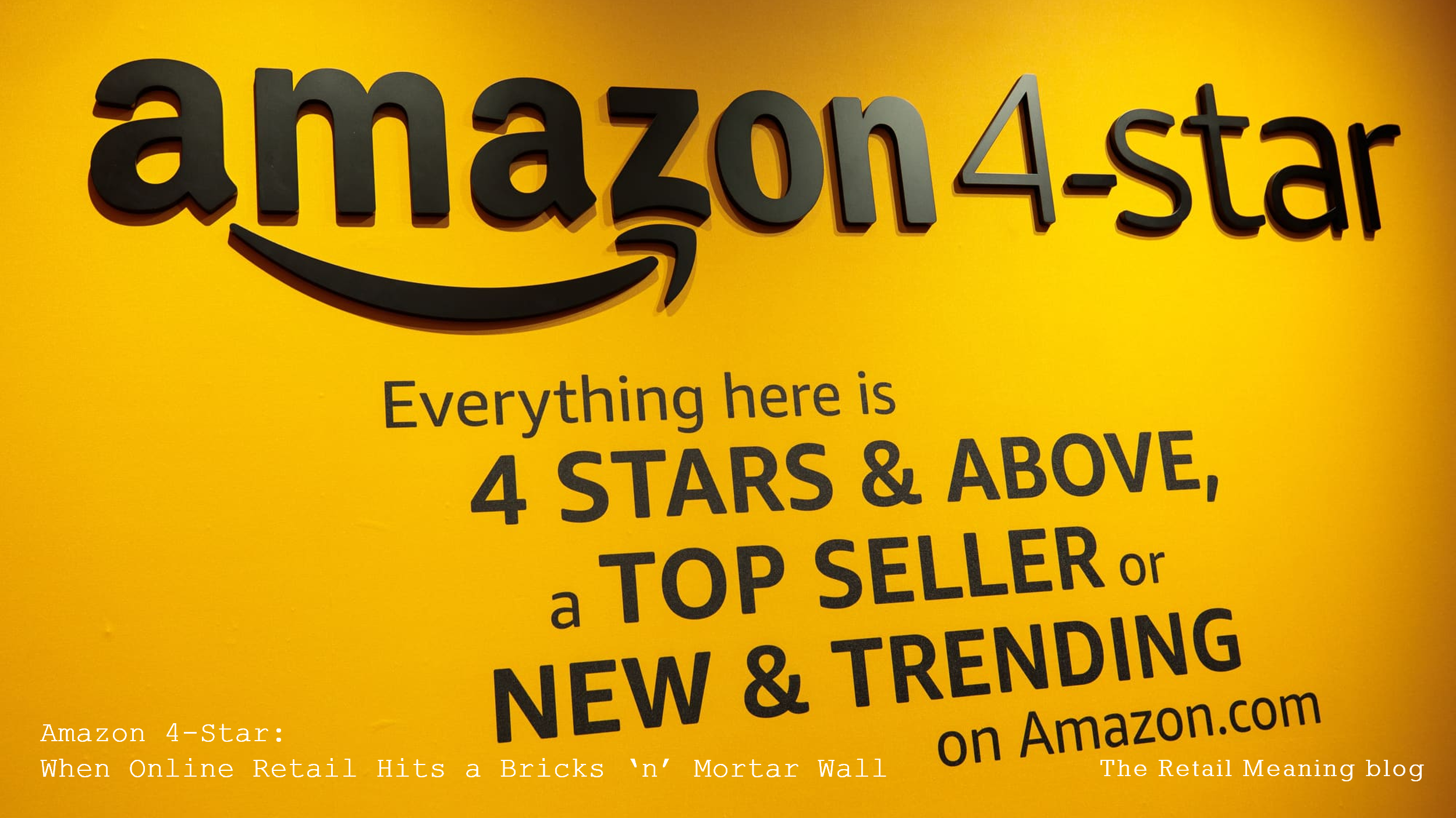I’m a great admirer of Amazon.
So, let’s move away from the nonsense that Amazon is killing retail. Amazon is a retailer and is leading a retail transformation. It may not be founded on designing, producing and selling its own products (although that is gathering irresistible momentum) but it is no less a retailer than Toys R Us, or any traditional department store or shop selling “other people’s stuff!”
Retailers of all origins and longevity would do well to learn quickly from its customer centric approach to everything.
That being said, the appearance of Amazon’s latest bricks ‘n’ mortar initiative – “Amazon 4-Star” illustrates the complexities facing any retail business in the world of physical stores. It highlights the dilemmas facing any buyer or merchandiser when it’s comes to constructing an assortment for real square metres.
For those new to Amazon 4-Star, its proposition is to display a range of products whose common link is that they represent the most popular of Amazon on line. They average 4.4 stars. They are best-sellers.
They also cover a wide range of categories and brands, and the consensus is that the store looks confused and is not the easiest to shop.
This is not a new, or omni-channel issue.
In many retail head-office showrooms, in many pre-season planning previews, retail executives have asked why they need to produce and display 500, or 1000 options, when they know most sales will come from half of them.
Whilst improved buying should increase the products that sell well, at least to justify their development. The fact remains that best sellers need lesser sellers around them. Without their entourage of minions, best sellers will fail to shine.
Back in the retail showrooms, any display of best sellers, selected from performance analysis alone, will look like the proverbial dog’s dinner. Failing to whet the appetite of the potential shopper. Not an attractive or emotionally engaging proposition.
In physical retailing, it is stories that attract and excite not individual products in isolation
First, a little retail revision for us all.
There are a variety of story types. Retail brands differentiate themselves by varying the balance and impact of these story types.
Assortments generally will include coordinated themes with products grouped by a fashion, lifestyle or another visual commonality. Silhouettes are short and sweet but equally tell an emotional story.
Category displays show us authority in a single function, sometimes combined simply with a coordinated logic of end-use. And hero products, in various colours and incarnations make for powerful bold statements.
Hero products are not the same as individual best sellers.
Apple has the lowest option density of any physical store, and possible the highest customer density. It’s a good combination to have.
Each of the dozen or so models (excluding accessories) is a best seller in its market. Their story is powerful and engaging. The range of colours, the display sequencing, the graphic support, the staff huddles all create a story bigger than the product itself.
However, the fact is that although Apple stores sell only hero products with powerful stories, hero products themselves consist of better and poorer selling options.
Black may sell, white may not, gold may catch the eye. Not even a hero product can claim to be made up of only best sellers.
What Apple does illustrate however is that a few super best sellers presented with style and space, within the context of a story, will sell more than an array of competing best sellers stifling each other’s stories.
Tiger is both a best-seller showcase and a product story wonderland.
A disruptor in its own right, Tiger broke the multi-category rules. It goes as far as is possible towards a best-seller only model in a physical space. In relatively small stores it covers many categories by reducing its option width in each.
Cleverly it “creams-off” the best-selling products of the best-selling categories. It applies to each the best-seller attributes and designs.
However visual confusion is avoided by the creation of very powerful metre wide wall stories. It supports best-sellers with a very select supporting cast of image makers and basic designs.
It’s not possible to have best-selling options without best-selling stories.
Amazon is to be celebrated for the 4-Star store. It is typically brave and at the very least tells them, and everyone else, the lessons of product stories.
It also illustrates what a different beast the physical store is to the online store. The journey of the customer, the guidance through both digital and physical architectures, the importance of visual stimulation and attraction density…are all distinctly different.
But at the heart of the difference is the product story.
Whether a “halo” around a “hero” or the power of physical numbers…stories need space.
And perhaps also customers need space. Space from the monotony of best-sellers.
People need the “fall-guy” as well as the “star” when it comes to a cracking story!!
Are you constructing the correct mix of product stories for your customers?
Do you buy and sell products in isolation, without a context?
